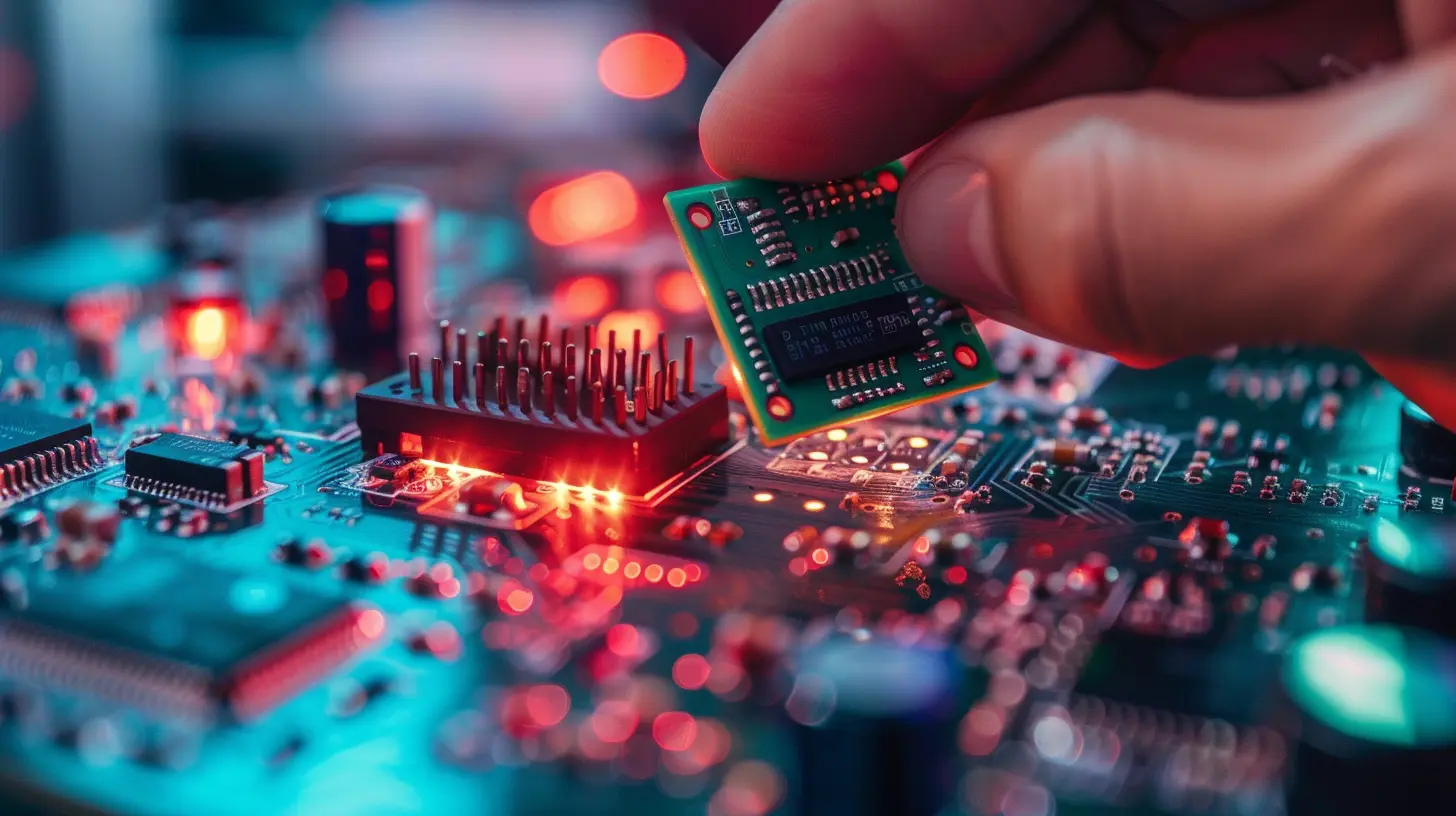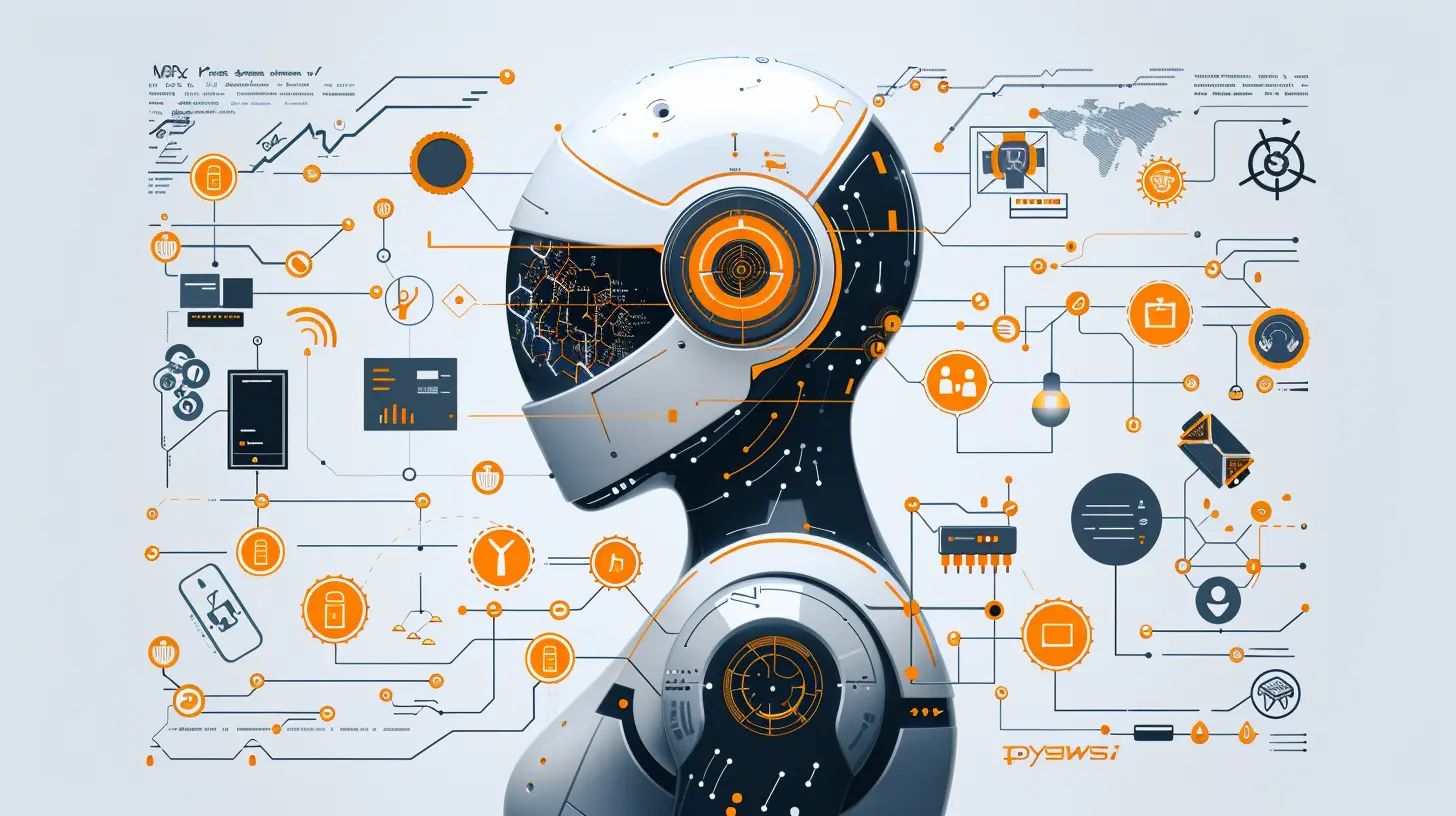Exploring the World of IoT with Python and Microcontrollers
24 April 2025
The world is becoming smarter, and it’s all thanks to the Internet of Things (IoT). From smart homes to industrial automation, IoT is reshaping how we interact with technology. But what’s powering these intelligent devices? You guessed it—microcontrollers and programming languages like Python.
If you've ever wanted to dive into IoT development, Python and microcontrollers are a match made in tech heaven. They provide an easy, flexible, and powerful way to build smart devices. In this article, we’ll break down how you can use Python and microcontrollers to create your own IoT projects, even if you're just starting out.

What is IoT, and Why Does It Matter?
Before we jump into the techy stuff, let’s define IoT. The Internet of Things (IoT) refers to a network of connected devices that communicate and share data over the internet. These gadgets collect and exchange information, making automation and remote control possible.Think of a smart thermostat that adjusts the temperature based on your habits or a fitness tracker monitoring your health—these are classic examples of IoT in action. Now, imagine the potential when businesses and industries integrate IoT into their systems. The possibilities are endless!

The Role of Microcontrollers in IoT
At the heart of every IoT device is a microcontroller—a small, low-power computer designed to perform specific tasks. Unlike traditional computers, microcontrollers are optimized for efficiency, making them ideal for IoT applications.Popular microcontrollers for IoT include:
- Arduino – A beginner-friendly platform that supports various sensors and actuators.
- Raspberry Pi – More powerful than Arduino, capable of running full Linux distributions.
- ESP8266 & ESP32 – Affordable and WiFi-enabled, perfect for IoT projects.
Microcontrollers allow devices to collect sensor data, process information, and send it over the internet. But how do we program them? That’s where Python comes in!

Why Use Python for IoT Development?
Python is widely known for its simplicity, readability, and vast collection of libraries. It's a favorite among developers, including those working on IoT projects. Here’s why it stands out:1. Easy to Learn and Use
Python’s straightforward syntax makes it easy for beginners to start coding IoT devices without getting lost in complex programming concepts.2. Huge IoT-Specific Libraries
Libraries like MicroPython, CircuitPython, and PySerial help developers communicate with microcontrollers effortlessly.3. Great for Rapid Prototyping
Python's flexibility allows you to quickly build and test IoT concepts before deploying them in real-world applications.4. Cross-Platform Compatibility
Python runs on various platforms, including Windows, macOS, and Linux, making it an ideal choice for IoT software development.5. Strong Community Support
With a vast online community, you can find resources, tutorials, and troubleshooting guides for any IoT challenge.
Setting Up Python for IoT Development
If you're ready to start, setting up Python on your microcontroller is fairly simple. Here’s a step-by-step guide:1. Choose the Right Microcontroller
For Python-based IoT projects, consider using:- ESP32/ESP8266 (supports MicroPython)
- Raspberry Pi (supports full Python)
- Adafruit CircuitPython boards
2. Install MicroPython or CircuitPython
MicroPython and CircuitPython are lightweight Python versions designed specifically for microcontrollers. Download the appropriate firmware for your board and flash it using tools like:- esptool (for ESP devices)
- Thonny (Python IDE for MicroPython boards)
3. Write and Upload Your Python Code
Once the setup is complete, write a simple Python script to blink an LED. This is the “Hello, World!” of microcontroller programming:python
import machine
import time led = machine.Pin(2, machine.Pin.OUT)
Using GPIO pin 2
while True:
led.value(1)
Turn LED on
time.sleep(1) Wait 1 second
led.value(0)
Turn LED off
time.sleep(1) Wait 1 second
Upload this script to your microcontroller using Thonny or a serial connection, and watch the LED blink!
Building an IoT Project with Python and Microcontrollers
Now that you understand the basics, let’s build a simple IoT project: a WiFi-enabled temperature logger using an ESP8266 and a DHT11 temperature sensor.What You Need:
- ESP8266 (or ESP32)- DHT11/DHT22 Temperature Sensor
- Jumper Wires
- Micro USB Cable
Connecting the Components
- Connect the VCC pin of the DHT11 to the 3.3V of the ESP8266.- Connect the GND pin of the DHT11 to GND of the ESP8266.
- Connect the Data pin of the DHT11 to GPIO2 of the ESP8266.
Installing Required Libraries
Before writing the code, install the dht library on your ESP8266:python
import dht
import machine
import time
import network
import urequests sensor = dht.DHT11(machine.Pin(2))
wifi = network.WLAN(network.STA_IF)
wifi.active(True)
wifi.connect('your_wifi_ssid', 'your_wifi_password')
while not wifi.isconnected():
pass
print("Connected to WiFi!")
while True:
sensor.measure()
temp = sensor.temperature()
humidity = sensor.humidity()
print(f"Temp: {temp}°C, Humidity: {humidity}%")
time.sleep(5)
This script reads temperature and humidity from the DHT11 sensor and displays the data. You can go a step further and send this data to a cloud server using MQTT or HTTP requests.
Expanding Your IoT Project
Once you’re comfortable with the basics, consider adding more features to your IoT projects:1. Connect to the Cloud
Send sensor data to services like ThingSpeak, AWS IoT, or Google Firebase for remote monitoring.2. Control Devices Remotely
Use Python with MQTT or WebSockets to control your IoT devices via the internet.3. AI-Powered IoT
Combine IoT with AI by running machine learning models on edge devices like Raspberry Pi for smart decision-making.
Challenges and Limitations of IoT with Python
While Python is fantastic for IoT, there are some limitations:- Limited Processing Power – Microcontrollers have less computing power than traditional computers.
- Memory Constraints – MicroPython and CircuitPython are lightweight, but memory limitations can restrict complex applications.
- Dependency on Internet Connectivity – IoT devices heavily rely on an internet connection; without it, functionality can be limited.
Despite these challenges, Python remains a powerful tool for IoT, allowing developers to prototype and deploy smart applications with ease.
Final Thoughts
Python and microcontrollers open the door to endless IoT possibilities. Whether you're building a smart home gadget, an industrial monitoring system, or an AI-powered IoT device, Python provides the flexibility and ease needed to bring your ideas to life.So why not grab a microcontroller, start coding, and build something amazing? The IoT revolution is here—time to be a part of it!
all images in this post were generated using AI tools
Category:
ProgrammingAuthor:

Adeline Taylor
Discussion
rate this article
7 comments
Mercy McKinley
Great article! Your insights into using Python with microcontrollers for IoT projects are invaluable. It's exciting to see how accessible technology has become, empowering developers to create innovative solutions. Keep up the fantastic work in expanding our understanding of IoT!
May 10, 2025 at 7:04 PM

Adeline Taylor
Thank you for your kind words! I'm glad you found the insights valuable. Exciting times ahead in the IoT space!
Galina Warner
This article effectively highlights how Python streamlines IoT development with microcontrollers, yet it could delve deeper into security challenges and best practices, which are crucial for sustainable IoT solutions.
May 3, 2025 at 3:47 AM

Adeline Taylor
Thank you for your insightful comment! I appreciate your suggestion about discussing security challenges and best practices, which are indeed vital for sustainable IoT solutions. I'll consider including this in future revisions.
Ariella Reed
Delve into the hidden realms of IoT, where Python dances with microcontrollers. What secrets linger in the code? Join us on this journey, where every connection tells a story.
May 2, 2025 at 4:30 AM

Adeline Taylor
Thank you! The intersection of Python and microcontrollers truly unveils fascinating possibilities in IoT. Excited to share these stories and insights with you!
Evangeline Wilcox
Ah, the Internet of Things! Because who doesn’t want their toaster sending them selfies? Can’t wait to see what other appliances will join the party—fingers crossed for a fridge with a personality!
April 30, 2025 at 12:45 PM

Adeline Taylor
Thanks for the humor! The possibilities with IoT are indeed endless—who knows, maybe your fridge will become your new best friend!
Inez McVicar
Embracing IoT through Python and microcontrollers opens up endless possibilities for innovation. It empowers creators to develop smart solutions, bridging the physical and digital worlds in ways previously unimaginable.
April 28, 2025 at 11:02 AM

Adeline Taylor
Thank you for your insightful comment! I completely agree—Python and microcontrollers truly empower innovative IoT solutions that transform our interactions with the physical world.
Audra McClellan
What an exciting journey into the realm of IoT! Python and microcontrollers truly make technology accessible and fun. The blend of creativity and coding opens up endless possibilities for smart projects. I can't wait to dive in and start experimenting! Great insights shared here!
April 27, 2025 at 8:02 PM

Adeline Taylor
Thank you! I'm glad you found the insights helpful. Excited for you to start experimenting with IoT and Python—it's a fantastic adventure!
Nadia Blevins
This article brilliantly highlights the synergy between Python and microcontrollers in the IoT landscape, showcasing how accessible coding can drive innovation and efficiency in smart device development.
April 25, 2025 at 4:10 AM

Adeline Taylor
Thank you for your kind words! I'm glad you found the article valuable in highlighting the relationship between Python and microcontrollers in IoT.
MORE POSTS

What Happens to Your Data When You Delete an Online Account?

How AI in Healthcare Gadgets is Saving Lives

The Role of Machine Learning in Predicting Consumer Behavior

The Role of Quantum Computing in Solving Complex Optimization Problems

The Evolution of Drone Technology in Military Applications

Autonomous Drones: The Future of Delivery and Beyond